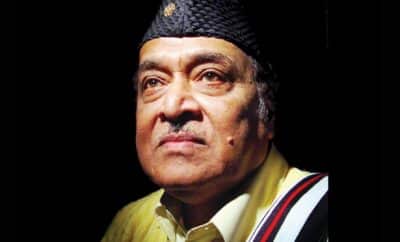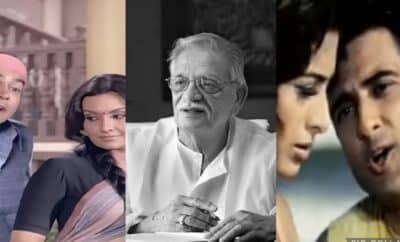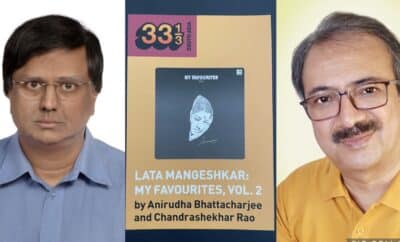Song Sketch
Mi Raat Taakli Mi Kaat Taakli – Jait Re Jait – Liberated In Love
Kaaton se kheench ke ye aanchal
Tod ke bandhan baandhi paayal
Koi na roko dil ki udaan ko
Dil wo chalaa…aa aa aa
Aaj phir jeene ki tamanna hai
Aaj phir marne ka iraada hai….
When Shailendra wrote these lines little did he know he might be giving voice to the thoughts of thousands of women out there. Not just back in the 60s but even in the present age. The last stanza of the song summarizes Rosie’s struggle as a woman.
Kal ke andheron se nikal ke
Dekha hai aankhein malte malte
Phool hi phool zindagi bahaar hai
Tay kar liya….
The struggle of a woman to come out of a relationship which is almost strangulating her, killing her soul, killing the girl inside her and the freedom after that struggle. The freedom which has given her a new life, a new found love, a partner who teaches her to love herself first. Freedom to love and to be loved, to be cherished. Love which comes without any terms and conditions. Love which made her heart go crazy with the abandon. Freedom which has given her the happiness she had never experienced. Love which has given her all the strength she needed. Just floating away in the feeling without knowing the destination. She feels indestructible and yet she’s apprehensive about getting lost in the middle of the road she has never travelled. A gay gypsy soul, an exotic mind which is on a route to an unknown destination with all its vibrancy. Love which allows you to stop thinking and wander where the heart goes. Lyricist Gulzar also agrees with this carefree, abandon love. He says-
O dil banjaare, jaa re
Khol doriyan sab khol de
A bird ready to fly. Leaving all the threads those had her attached to the unfruitful relationship. Maya Memsaab falling in love with Raj Babbar while still married to Farooq Sheikh. Rosie (Waheeda Rehman) and Maya (Deepa Sahi) from Guide and Maya Memsaab respectively are the examples of the women who had the courage to remove themselves from the situation in life which was unacceptable to them. Rosie going through a marriage where the husband is using, abusing and insulting her and Maya is into a marriage where the husband doesn’t have time for her, he’s busy in his own world. These are the women who are craving not only for love but for respect and trust. And when love comes knocking for the second time in life they are not ashamed to go forward and accept it with open arms. It gives different perspective in life. Boosting their self esteem. Another example of similar situation could be this. Looking at all these examples there’s a Marathi song which comes to mind from Jait Re Jait – Mi raat taakli, mi kaat taakli. Directed by Dr. Jabbar Patel, Jait Re Jait which means Win-Win, is a film based on Marathi novel of same name written by G.N. Dandekar. It revolves around the life and tradition of the Thakar tribe in Maharashtra.
An English proverb says – Art lies in concealing art. A proverb with a hidden meaning. Showing what is pragmatic in an artistic way. The representation of abstract in a skilful and efficient way. Creating some real sense out of what is depicted. It is about creating a world of reality which is not. Giving life to things which do not exist in real life. A representation of another life that is imaginative. Cinema is considered to be an important art form. A source of popular entertainment and powerful way of educating. Commercial cinema and Art cinema are the best examples of art depicted in different ways. A means of understanding and expressing something exquisite and fragile. Jait Re Jait (1977) is one such fragile art film which narrates the poignant story of win, loss and love. The story of winning in life but losing the love.
Nagya (Mohan Agashe) is a honey gatherer and a tribal drummer. He is obsessed with attaining the state of purity. Chindhi (Smita Patil) is married to a man who is not bothered about her, doesn’t work and she considers him useless. After seeing Nagya, she falls in love with him. She is courageous enough to declare this to her father, break the ties of her dead marriage and enter into a relationship with Nagya. Though the film did not do well at the box office, it won President’s Silver Medal for Best Feature Film in Marathi at National Film Awards. It is considered to be one of the greatest musical hits of all time in Marathi cinema. It was the haunting music by Pandit Hridaynath Mangeshkar and equally mesmerising lyrics by N. D. Mahanor which proved to be the winner.
Mi raat takali, mi kaat takali
Mi mudakya sansaaraachi bai laaj takali
Just like Kal ke andheron se nikal ke – she says Mi raat taakli – I have let the night go, I have cast off that old skin which was of no use to me. I’m not ashamed to come out of the wedlock which was nothing but a sham. I feel rejuvenated now.
Pandit Hridaynath Mangeshkar has put a soul into these body of words. He has used an ensemble of various lesser known instruments which keep the haunt quotient alive throughout the song. Sundari, clarinet, toto, santoor, ghungroo tarang, Spanish guitar, dhol, duff, bagalbachcha and Rajasthani shehnai.
Hiravya paanaat, hiravya paanaat saawr saawr chaalti
Bhar jwaanitalee naar, ang modit chaalti
This young maiden in her prime sways along the path that is untrodden without any inhibitions.
The chorus backs up the song after each stanza rendered by Ravindra Sathe and Chandrakant Kale. On screen are seen Sriram Ranade and Chandrakant Kale himself. These actors along with actress Kamini are the narrators of the entire film and are featured in all the songs.
Hya pankhawarati, mi nabh paangharati
Mi mukta morani bai chandanyaat nhaati
I carry the sky on my wings, I feel like the unfettered, liberated bird (peahen) who dances in the moonlight.
Angaat maajhiya bhinnlaay dholiya
Mi bhingarbhiwari tyachi go maalan jhaali
Mi baajindi manamaani bai fulaant nhaali
Every cell in my body throbs on him, though I’m a gypsy at heart I’ll tend to the garden of our life together. I’ll bathe in the flowers of his love with all wilfulness.
Produced by Usha Mangeshkar the film is represented in musical narrative style. The dusky beauty with brains Smita Patil plays the character of a strong woman, who takes the decisions for herself. She mesmerises the audience as Chindhi.She has got immense screen presence. One just can’t take eyes off her. Pandit Hridaynath Mangeshkar’s music is unconventional and hypnotic. It penetrates your heart and mind. We come to know the vastness of his music when we listen to songs such as this one. Not to forget Lata Mangeshkar’s voice adding to the magic he created. Uninhibited as love, wanton as love, liberated as love!!




Yatin Deshpande
November 8, 2018 at 1:33 pm
I enjoy the Marathi Song sketches.
The entire film is a harmonious combination of all departments which makes Jait re Jait a classic.
Hridaynath Mangeshkar’s music is fantastic.
Smita Patil’s looks the tribal attire make it very difficult to take eyes off her. Sadly she left us too early.
Deepa
November 21, 2018 at 6:56 pm
Thank you. Hridaynath Mangeshkar’s music is always fantastic. He’s got that x factor in his songs!! Indeed we lost Smita Patil too soon.
Pingback: Carnival of Blogs on Golden Era of Hindi Film Music : November, 2018 – The world is too small? or Is it?
जयसिंग गाडेकर
June 10, 2019 at 10:43 am
खूप सुंदर रसग्रहण आणि त्याविषयी माहितीदेखील।धन्यवाद
Harendra
February 10, 2020 at 10:49 pm
also note that in the end of the song she walks away into leafless trees
Pranav More
August 31, 2020 at 12:21 am
Thank you so much. I was looking for its meaning, you have explained it very well. Keep it up.